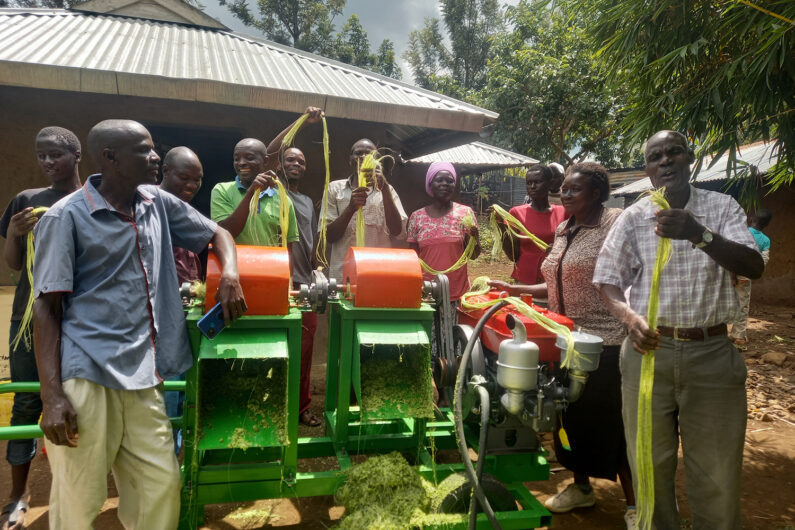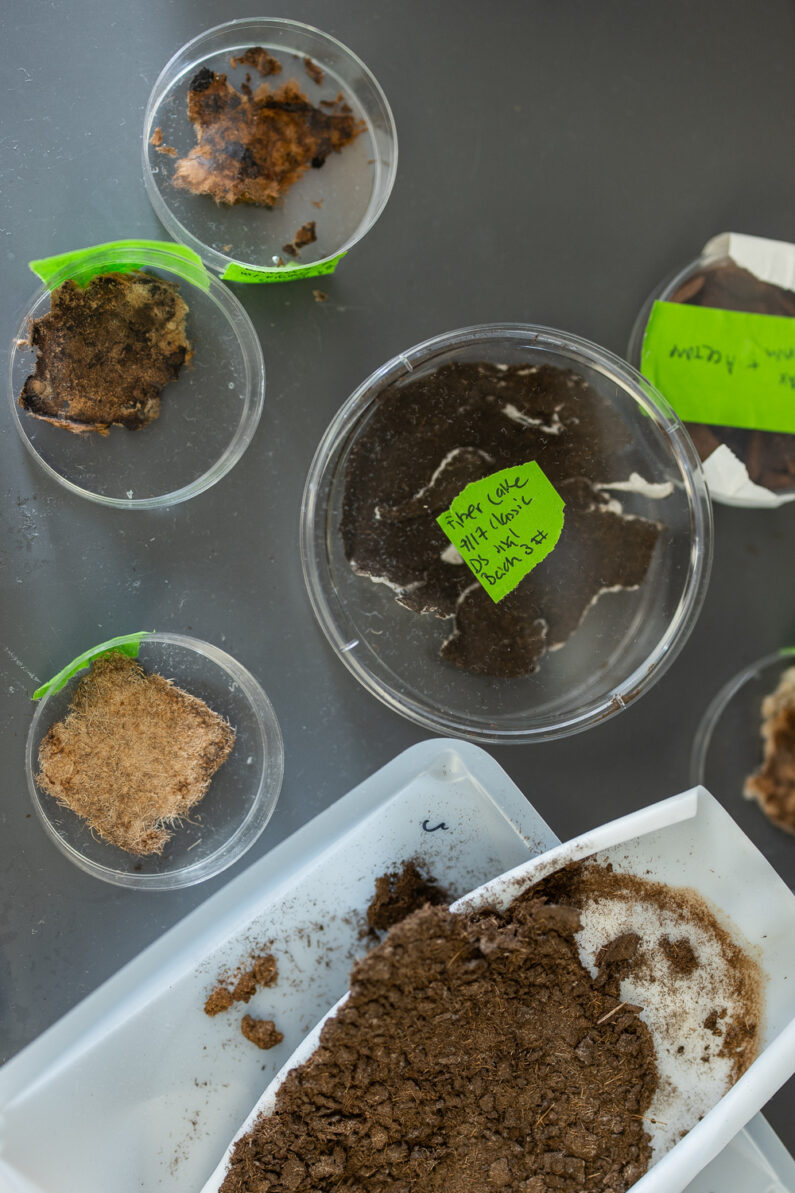Sustainable, plant-based menstrual pads could improve access to hygiene products
Researchers at Stanford have designed an open-source process for turning sisal fibers into absorbent material for menstrual pads, creating an opportunity for the local, sustainable manufacture of hygiene products that many communities need.

From left, Anton Molina, Anesta Kothari, and Manu Prakash show the sisal fiber and the cotton-like material they’ve produced from the sisal. They hope this material could be used to make more accessible and sustainable menstrual pads. (Image credit: Andrew Brodhead)
For people who menstruate, access to affordable and hygienic period products is a necessity. A lack of pads, tampons, menstrual cups, or safe and hygienic facilities to use and dispose of them can affect attendance at work and school or participation in other aspects of daily life. Yet studies estimate that 500 million people – women, girls, and transgender and nonbinary individuals – don’t have access to the facilities and products they need to manage their period.
Researchers at Stanford are working to change this. Manu Prakash, an associate professor of bioengineering at Stanford, and his collaborators have developed a method to turn fibers from the sisal plant, Agave sisalana, into a fluffy, absorbent material for menstrual pads. Their work, published recently in Communications Engineering, could help small-scale manufacturers use locally sourced materials to create affordable, high-quality menstrual products for their communities.
“To open up access to local manufacturing, you have to think about where the raw materials will come from,” Prakash says. In Kenya in particular, “as it turns out, sisal is absolutely incredible.”
From plant to pad
A critical component of a menstrual pad is the absorbent core. To find the best material for creating plant-based pads, the researchers started out with a systematic approach, looking at existing products and biological resources being used in different areas around the world. Some crops, like cotton, were too costly and water-intensive and others, like timber, only had large supplies available in a few countries.
“We started mapping everything. We mapped bananas, we mapped water hyacinth, anything we could get our hands on,” Prakash says. “The idea was that we would create a biodiversity map, looking at as many plants we could find and sets of universal processes that can give rise to high absorption products.”
Sisal, a large succulent with five-foot-long, sword-shaped leaves jutting out like the spines of a sea urchin, came to Prakash’s attention because of a long friendship with Alex Odundu, a Kenyan engineer. Odundu, also a co-author on the paper, has been developing machinery to help small farming communities process sisal more efficiently. The hardy plant is native to Central America but has been cultivated in parts of Africa and other regions because fibers in its leaves can be made into strong rope and twine. The team knew it was a low-maintenance plant, thriving even in drought years, but no one had tried using it to produce the high-quality cellulose pulp needed for a menstrual pad.
Drawing inspiration from the way termites break down wood, Prakash and his colleagues developed a process to strip away the lignin – a polymer in plant cells that provides structure and repels water – from the sisal fibers and used a blender to break the remaining macro cellulose fibers into microfibers, resulting in an absorbent, airy fluff.
“You end up with this beautiful fluff that looks almost indistinguishable from cotton,” says Anton Molina, a doctoral student in Prakash’s lab and co-author on the paper. “The microscale properties of the fibers are what makes sisal stand out. It’s a better alternative than, say, hemp or flax and exceeds the performance of commercially available cotton pads.”
Moreover, the chemicals used in the processing are easy to source and can either be recycled into other products or harmlessly transformed into carbon dioxide and water.
“One of the key things about this paper was ensuring that the minimal chemicals we are using can be sourced and made on-site,” Prakash says. The team is currently testing similar approaches and materials to produce the porous top and waterproof bottom layers of a pad, creating a simple end-to-end pipeline to go from plant to a full pad. “You can truly imagine a small-scale factory – maybe the size of a local brewery – making 5 to 10 thousand pads per day with nothing but the biological material coming in and products going out.”

People in Kenya pose with sisal leaves and the equipment they use to process the plant to make various products, including rope and twine. (Image credit: Alex Odundu)
Ending period poverty
The researchers have developed a simple manufacturing process and quality control measures with the intent to make them all open-source so that anyone interested in developing sustainable, affordable menstrual products will have access to their methods. They are also working to put together a database of other plant-based materials and methods that are being used or tested.
“It has been great so far, learning from others across the world,” says Anesta Kothari, a researcher in Prakash’s lab and co-author on the paper. “We’re trying to work directly with communities and get our tools into the hands of users.”
To that end, the researchers have started the Plant Pad Consortium, an international group of entrepreneurs, academic groups, and non-governmental organizations who want to build and share the knowledge necessary to develop local, sustainable, affordable solutions for menstrual hygiene.
“There is a tremendous energy on the ground – lots of entrepreneurs are trying to solve problems – but they don’t have their own R&D departments or the science capacity to do it alone,” Prakash says. “We’re trying to build this consortium so that we can, say, take a process discovered in my lab and implement it in Nepal, or use one of our labs to test an idea from an entrepreneur in Nigeria and help deploy it in a site in Kenya.”
Prakash is a member of Stanford Bio-X, the Stanford Maternal & Child Health Research Institute, and the Wu Tsai Neurosciences Institute; and a senior fellow of the Stanford Woods Institute for the Environment and a faculty fellow of the Center for Innovation in Global Health.
This work was funded by the National Science Foundation and the Bill & Melinda Gates Foundation.
To read all stories about Stanford science, subscribe to the biweekly Stanford Science Digest.

